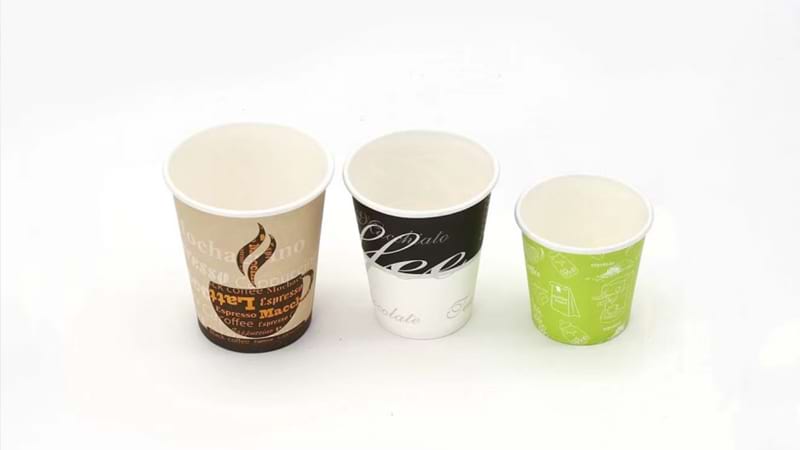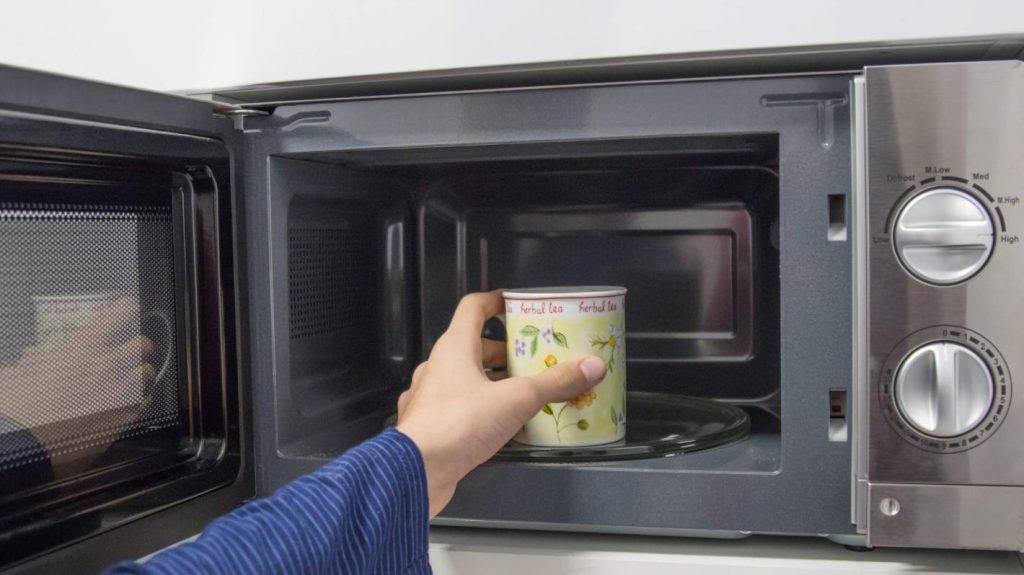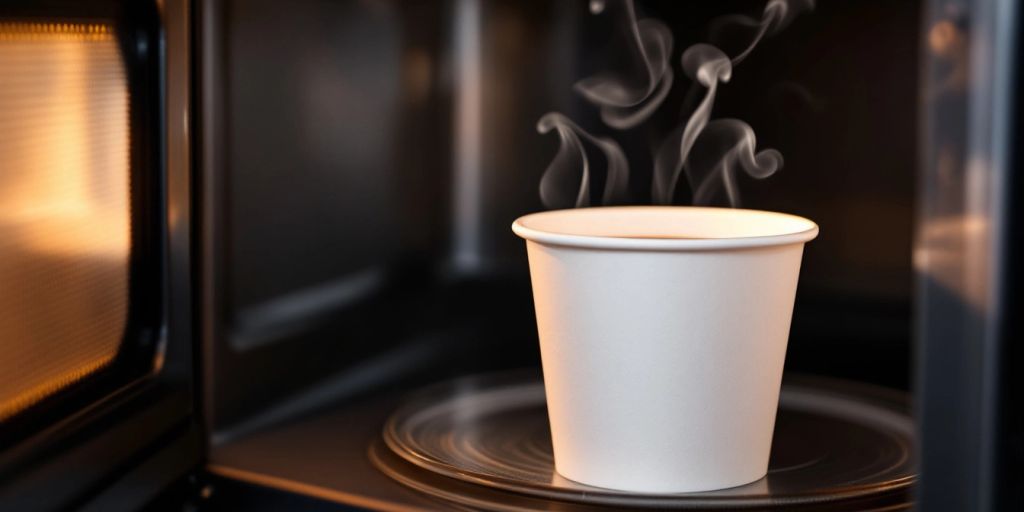
Have you ever wondered if you can safely reheat your coffee in its paper cup? It's a common question with important safety implications. Paper cups seem convenient, but they hide potential risks when heated.
Most paper cups contain plastic or wax linings that can melt under microwave heat. This melting may release harmful chemicals into your drink. The cup might also deform, leak, or even catch fire in extreme cases.
In this post, you'll learn about different types of paper cups and their microwave safety. We'll explore how to identify microwave-safe options and discover safer alternatives for reheating your beverages.
Understanding the Composition of Paper Cups
Before deciding whether to microwave a paper cup, it's essential to understand what they're made of. Paper cups aren't just simple paper products. They combine paper with a protective lining that makes them functional for holding liquids.
Most paper cups feature a paper base with a thin plastic or wax coating on the inside. This lining serves two crucial purposes. First, it creates a waterproof barrier that prevents your coffee or soup from leaking through. Second, it helps the cup maintain its shape when filled with hot liquids.
The type of coating used varies depending on the manufacturer and the cup's intended use. Some common linings include:
Polyethylene (PE) - Most common, low heat resistance (80-100°C)
Polypropylene (PP) - Better heat tolerance (up to 120°C)
Polyethylene Terephthalate (PET) - Highest heat resistance (up to 220°C)
Types of Eco-Friendly Disposable Paper Cups
As environmental concerns grow, manufacturers have developed various eco-friendly paper cup options:
| Cup Type | Description | Best Used For |
| Single Wall | Basic design with one layer of paper and coating | Both hot and cold beverages |
| Double Wall | Additional paper layer for better insulation | Hot beverages like coffee and tea |
| Ripple Wall | Textured outer layer providing insulation and grip | Hot beverages, popular in coffee shops |
| Biodegradable | Made from sustainable materials without plastic components | Environmentally conscious consumers |

Potential Risks of Microwaving Paper Cups
While paper cups are convenient for serving hot beverages, placing them in a microwave introduces several serious concerns. The seemingly harmless act of reheating your coffee in its original cup could compromise both your health and safety.
The primary risk comes from the cup's protective lining. When exposed to microwave heat, the plastic or wax coating may begin to melt. This melting process can cause chemicals to leach directly into your food or drink. Unlike conventional heating, microwaves can create intense "hot spots" that accelerate this chemical transfer.
Heat management presents another challenge. Paper cups can become extremely hot during microwaving, creating a serious burn hazard. The thin walls provide little insulation, making the cup difficult to handle safely after heating.
These risks significantly increase when using cups that aren't specifically labeled as microwave-safe. Standard takeout cups are designed for serving, not reheating.
What are the Dangers of Microwaving a Non-Microwavable Paper Cup?
Non-microwavable paper cups contain several components that become problematic when heated:
Chemical Contaminants: The dangers include:
Fluorescent Agents: Used to make cups look whiter, these chemicals can contaminate food when heated
Printed Inks: Decorative elements on cups may melt and mix with food
PE Coating: Low-grade plastic linings can release toxins at microwave temperatures
Adhesives: Glue used in cup construction, especially in lids, can melt into food
The severity of these risks varies by cup type and heating duration as shown below:
| Component | Risk Level | Potential Effects |
| Fluorescent Agents | High | May cause digestive issues |
| Printed Inks | Medium-High | Possible toxic exposure |
| PE Plastic Coating | Very High | Chemical leaching, potential long-term health concerns |
| Adhesives/Glue | Medium | Unpleasant taste, possible mild toxicity |
Even brief microwave exposure can compromise cup integrity, potentially causing leaks, structural failure, or in extreme cases, fire hazards.
Factors to Consider Before Microwaving Paper Cups
Before you place that paper cup in the microwave, take a moment to evaluate several critical factors. Making informed decisions can help prevent potential hazards and ensure your safety.
First and foremost, always check the cup's labeling. Manufacturers typically indicate whether their products are microwave-safe with a specific symbol or text. This designation means the cup has been tested to withstand microwave temperatures without degrading.
The microwave settings you use matter significantly. Higher power levels generate more intense heat that can quickly compromise the cup's integrity. Consider using:
30-50% power instead of full power
Shorter heating intervals with breaks in between
Total heating time appropriate for the cup type
After microwaving, remember that the contents will be much hotter than the cup appears. Use these precautions when handling:
Allow the cup to cool briefly before removing from microwave
Lift from the bottom rather than gripping the sides
Use a napkin or paper towel as insulation when handling
Test temperature carefully before drinking
How Long Can You Microwave a Paper Cup?
Safe microwaving times vary significantly based on cup construction and contents. Follow these guidelines for optimal safety:
| Content Type | Maximum Time | Recommended Power | Special Instructions |
| Drinks (coffee, tea) | 45-60 seconds | Low to medium | Add 30 seconds if needed after checking |
| Soup or noodles | 3 minutes | Medium | Remove lid or ensure proper venting |
| Cold leftovers | 2+ minutes | Medium-high | Ensure internal temp reaches 70°C |
Safety Tip: When microwaving soup or liquid foods, fill the cup only 2/3 full to prevent overflow as the contents heat and expand.
Remember that even microwave-safe paper cups have limitations. No paper cup should remain in a microwave beyond 4-5 minutes at high temperatures, regardless of what the cup contains.
The cup's coating type significantly impacts safe heating times. PET-coated cups generally offer the best heat resistance, while PE-coated options should only be heated briefly, if at all.
Tips for Using Paper Cups in the Microwave Safely
If you must use a paper cup in the microwave, following certain precautions can help minimize potential risks. Safety should always be your top priority when heating any container.
First, verify that your cup is actually designed for microwave use. Not all paper cups are created equal, and most take-out containers aren't suitable for reheating. Look specifically for cups marked "microwave-safe" on the bottom or packaging.
Never place cups with decorative metallic elements in the microwave. Even small amounts of metal can cause sparking and create fire hazards. This includes gold or silver trim, metallic inks, or foil accents.
When filling your cup, remember this simple rule:
Leave at least 1 inch of space at the top to prevent overflow as liquids expand when heated.
After microwaving, give the cup a moment to cool before removing it. The contents may be much hotter than the cup itself appears, creating a burn risk when handled immediately.
How to Tell if a Paper Cup is Microwave Safe
Not sure if your cup can handle microwave heat? Try these identification methods:
Method 1: Check for Labeling
Most microwave-safe cups will have one of these indicators:
A microwave symbol (wavy lines)
Text stating "microwave-safe" or "suitable for microwave use"
Instructions for microwave heating on the packaging
Method 2: Perform the Heat Test
If no labels are present, this simple test can determine microwave compatibility:
Fill a known microwave-safe glass with water
Place this glass alongside the empty paper cup in question
Microwave both on high for exactly one minute
Carefully check the temperature of both items
| Test Result | What It Means | Safe to Use? |
| Paper cup hot, water cold | Cup absorbs microwave energy | NO |
| Paper cup cool, water hot | Cup doesn't absorb energy | YES |
| Both items warm | Cup partially absorbs energy | USE WITH CAUTION |
This test works because microwave-safe materials allow energy to pass through them rather than absorbing it, keeping the container relatively cool while heating only the contents.

Conclusion: Using Paper Cups in the Microwave
Microwaving paper cups can be safe, but only with proper precautions. Not all cups are created equal. Some can withstand heat while others may melt or release harmful chemicals.
Always check for microwave-safe labels before heating. Follow recommended time guidelines and power settings for different foods and drinks.
The safest option is transferring your beverage to a microwave-safe glass or ceramic container. This eliminates any risk completely.
Understanding what your paper cup is made of helps you make better decisions. Different coatings have varying heat tolerances and safety profiles.
With these simple precautions, you can enjoy your reheated drinks safely!
Frequently Asked Questions About Microwaving Paper Cups
Is it safe to microwave paper cups?
Generally, it is not safe to microwave standard paper cups. Most have plastic or wax linings that can melt at high temperatures. Only use cups specifically labeled as microwave-safe.
Is it safe to reheat coffee in a paper cup?
Reheating coffee in a paper cup is not recommended. The heat can cause the cup's lining to break down and potentially release chemicals into your beverage. Instead, transfer your coffee to a microwave-safe mug.
Can you put Starbucks paper cups in the microwave?
Starbucks cups are not designed for microwave use. They contain a plastic lining that may melt when heated. For safety, always transfer your Starbucks beverage to a microwave-safe container before reheating.
Can paper cups withstand heat?
Paper cups can withstand some heat, but their resistance varies by type:
| Cup Type | Heat Resistance | Microwave Safe? |
| Standard PE-coated | 80-100°C | No |
| PP-coated | Up to 120°C | With caution |
| PET-coated | Up to 220°C | Generally yes |
| Plain paper (no coating) | Low | No |
Are paper coffee cups microwavable?
Most paper coffee cups are not microwavable unless specifically labeled. The plastic lining that makes them waterproof can melt in the microwave, potentially releasing chemicals into your drink.
Are fast food paper cups recyclable?
Unfortunately, most fast food paper cups are difficult to recycle due to their plastic lining.
The combination of paper and plastic requires special processing that most recycling facilities don't offer. Some specialty recycling programs may accept them.
Are paper cups bad for your health?
Standard paper cups are generally safe for one-time use. However, when heated in a microwave, their linings may release chemicals that could pose health concerns.
Are paper or plastic cups better for the environment?
Paper cups typically have less environmental impact than plastic cups. They:
Break down faster in landfills
Require fewer fossil fuels to produce
Often contain recycled materials
However, their plastic lining still creates environmental challenges.
Can you bake muffins in paper cups?
Yes, paper baking cups (cupcake liners) are specifically designed to withstand oven temperatures. They're different from drinking cups and are safe for baking.
Can you mix resin in paper cups?
Paper cups can be used for mixing small amounts of resin. However, some resins may break down the cup's lining over time. For best results, use cups specifically recommended for craft use.

























